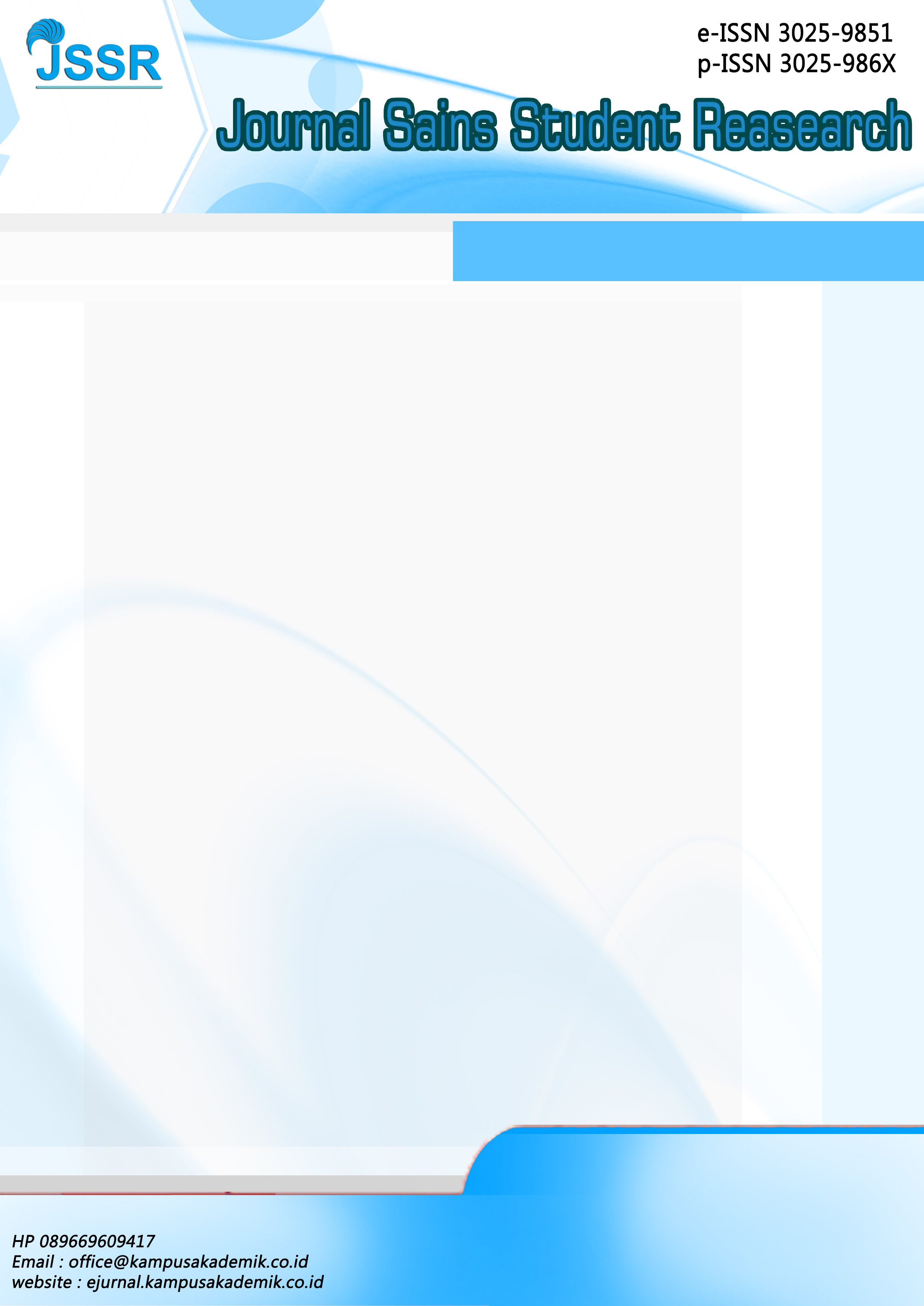KOMPRESI DAN OPTIMASI VIDEO STREAMING BERBASIS AI UNTUK PENGALAMAN PENGGUNAAN MULTIMEDIA YANG LEBIH BAIK
DOI:
https://doi.org/10.61722/jssr.v3i2.4323Keywords:
Video Compression, Artificial Intelligence (AI), Deep Learning, Adaptive Streaming, Multimedia QualityAbstract
Video has become a fundamental component in various aspects of modern life. People widely use this medium for a range of purposes, from consuming entertainment content to engaging in online learning activities. However, technical issues related to network infrastructure remain a major challenge. Problems such as high latency, bandwidth fluctuations, and unstable connections often lead to a degraded user experience—ranging from disruptive buffering to sudden drops in video resolution. To address these challenges, researchers have begun developing AI-based approaches for optimizing video compression. Two widely used deep learning architectures are Convolutional Neural Networks (CNNs), which are effective for visual feature extraction, and Generative Adversarial Networks (GANs), which can reconstruct data with high precision. The combination of these techniques enables a significant reduction in video file size without compromising visual quality. Moreover, these systems are designed with adaptive mechanisms that dynamically adjust encoding parameters based on the user’s network conditions. Such implementations allow for more stable video delivery even under limited bandwidth conditions.
References
Adryansyah, M. R. H., Quiroz, P. A., Zuhdi, M. I., & Sutabri, T. (2023). “Perancangan multimedia teknologi Virtual Reality dan Augmented Reality sebagai media pameran digital”. Technologia: Jurnal Ilmiah, 14(3), 214–219.
Febriansyah, M. F., Gunawan, R., Setiawan, R., & Sutabri, T. (2024). “Kemudahan dan keamanan dalam rumah pintar: Tinjauan terhadap teknologi smart home”. Indonesian Journal of Multidisciplinary, 2(1), 24–30.
Farwati, M., Salsabila, I. T., Navira, K. R., & Sutabri, T. (2023). “Analisa pengaruh teknologi Artificial Intelligence (AI) dalam kehidupan sehari-hari”. Jurnal Sistem Informasi & Manajemen, 11(1), 40–44.
Krichen, M. (2023). “Convolutional neural networks: A survey”. MDPI, 12(8), 2–35.
Magfiroh Ramadhani, I., & Sulaksono, D. H. (2023). “Implementasi arsitektur client-server pada video streaming untuk pembelajaran Bahasa Inggris”. Kernel: Jurnal Riset Inovasi Bidang Informatika dan Pendidikan Informatika, 4(2), 130–134.
Mohammed, A., & Kora, R. (2023). “A comprehensive review on ensemble deep learning: Opportunities and challenges”. Journal of King Saud University - Computer and Information Sciences, 35, 757–770.
Permana, F. C., & Bandung, Y. (2024). “Pemetaan sentimen pengguna media sosial dalam evaluasi quality of experience kinerja layanan video streaming”. Jurnal Sains & Teknologi, 13(1), 136–144.
Sharifani, K., & Amini, M. (2023). “Machine learning and deep learning: A review of methods and applications”. World Information Technology and Engineering Journal, 10(7), 3898–3901.
Sihotang, A. (2022). “Implementasi algoritma Prefix Codes untuk kompresi file video hasil ekstra aplikasi Kinemaster”. BIOSTech: Bulletin of Computer Science and Information Technology, 1(1), 22–28.
Simanjuntak, S. (2022). “Implementasi metode Taboo Code untuk kompresi file video”. Journal of Computer Science and Information Technology, 2(1), 32–37.
Sutabri, T. (2012). “Konsep sistem informasi”. Yogyakarta: Andi.
Sutabri, T., & Napitupulu, D. (2019). “Sistem informasi bisnis”. Yogyakarta: Andi.
Taye, M. M. (2023a). Theoretical understanding of convolutional neural network: Concepts, architectures, applications, future directions. MDPI, 11(3), 3–15.
Taye, M. M. (2023b). “Understanding of machine learning with deep learning: Architectures, workflow, applications and future directions”. MDPI, 12(5), 3–20.
You, A., Kim, J. K., Ryu, I. H., & Yoo, T. K. (2022). “Application of generative adversarial networks (GAN) for ophthalmology image domains: A survey”. Eye and Vision, 9(6), 2–14.
Downloads
Published
Issue
Section
License
Copyright (c) 2025 JOURNAL SAINS STUDENT RESEARCH

This work is licensed under a Creative Commons Attribution-ShareAlike 4.0 International License.













